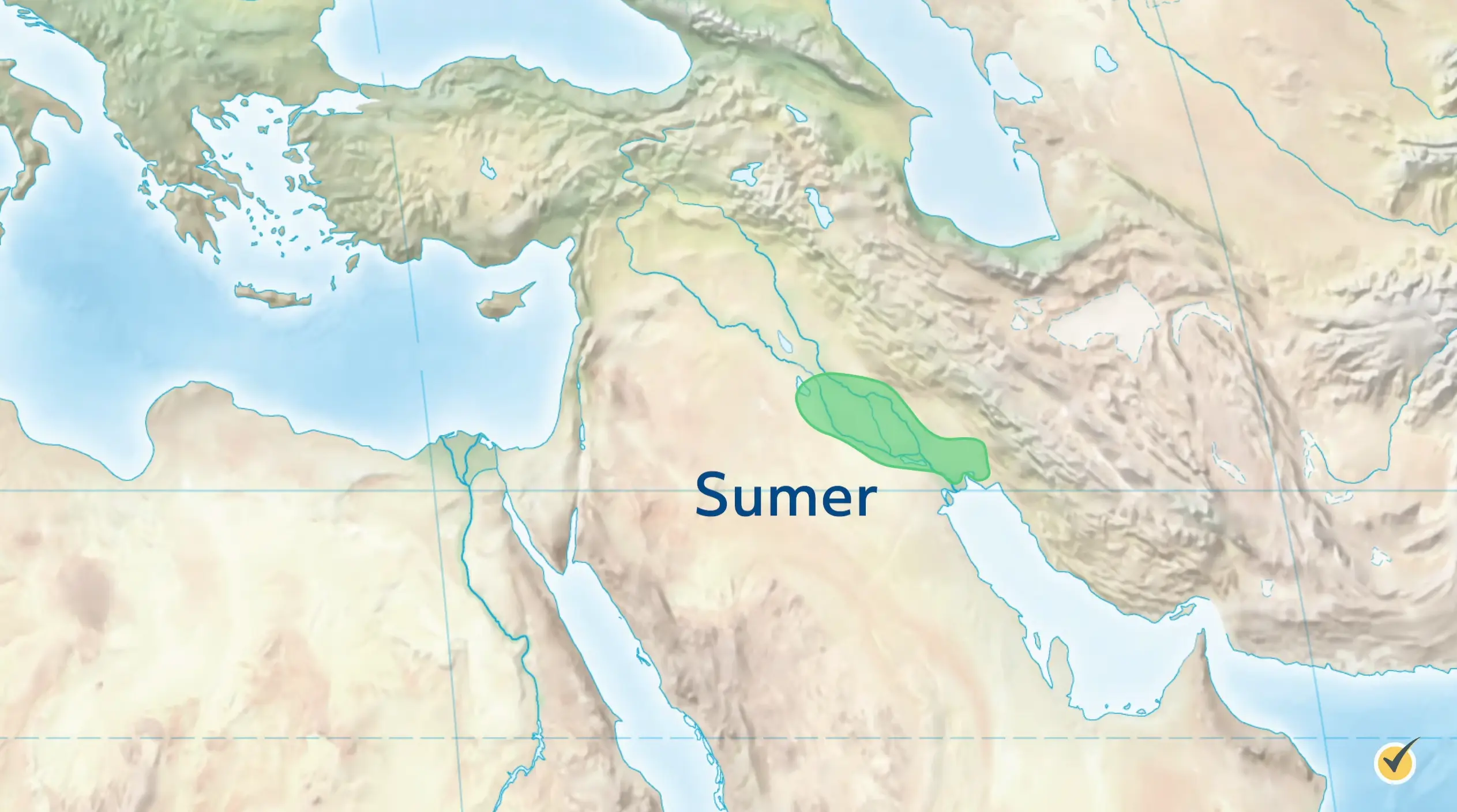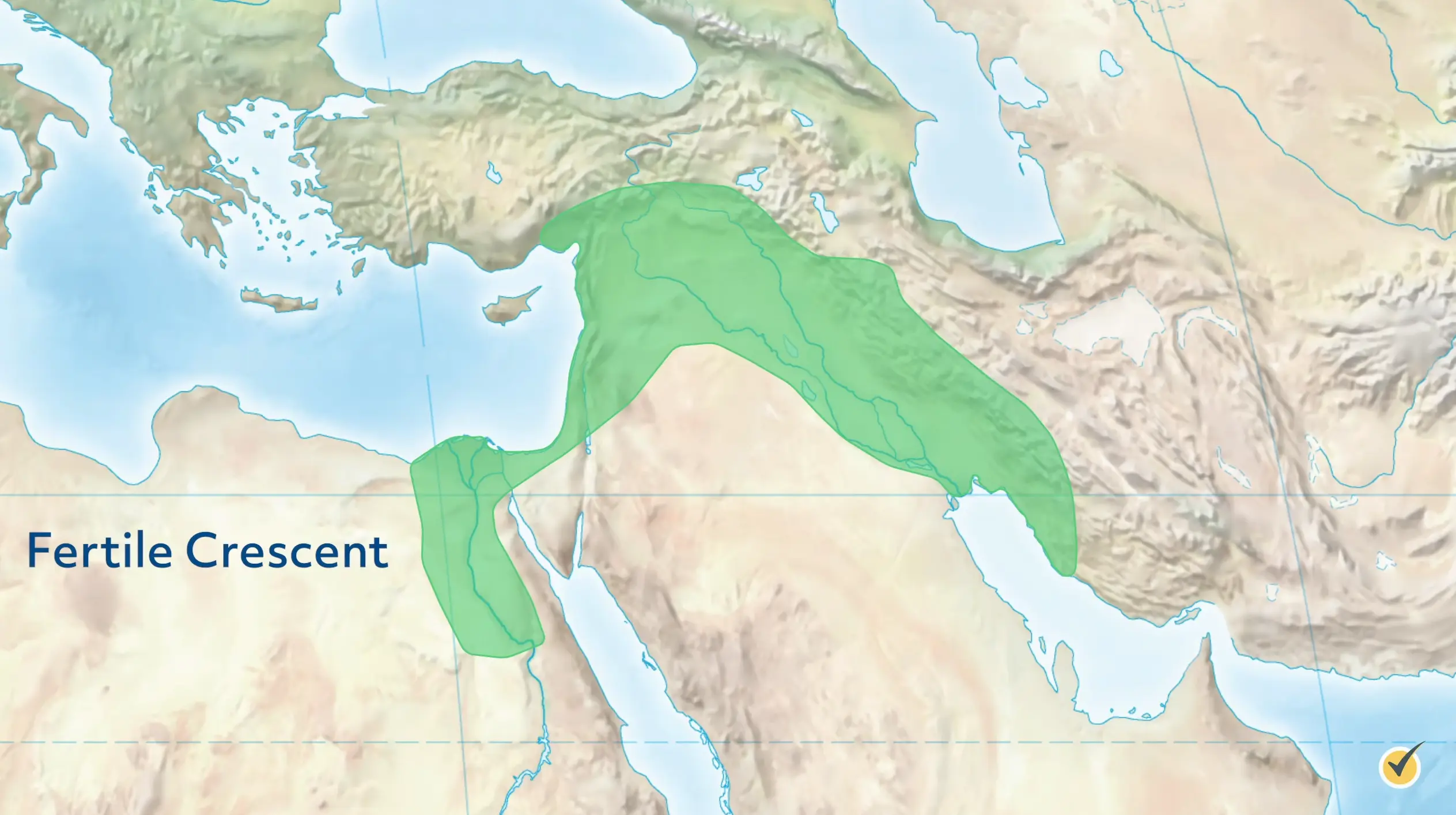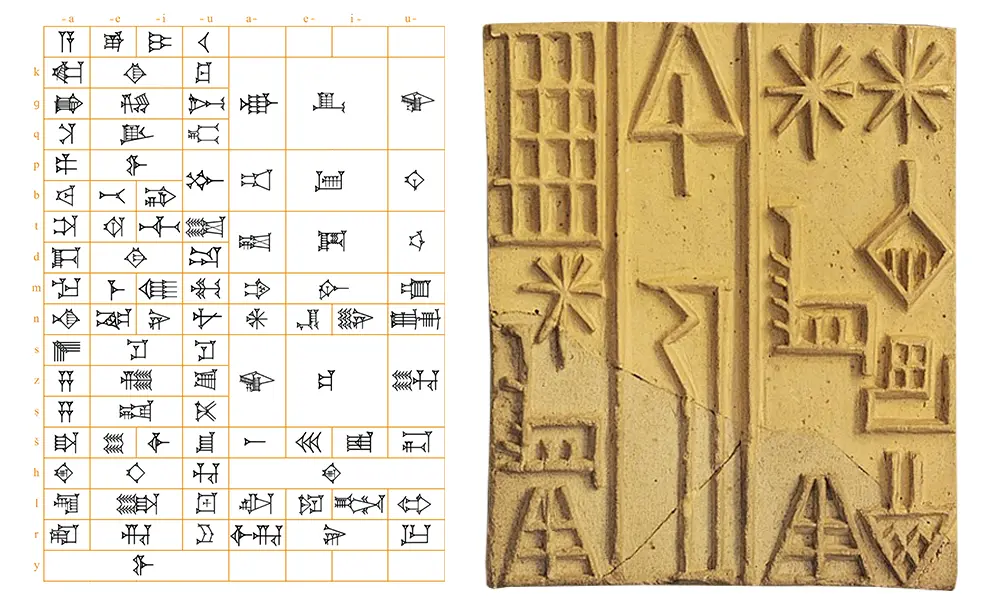
Few cultures can lay claim to helping begin what we call civilization. Ancient Sumer, founded in the region known as Mesopotamia between the Tigris and Euphrates Rivers, was one such culture.

Their creations shaped the spread of culture in the wider Fertile Crescent, and Sumerian innovations would continue to shape kingdoms, empires, and countries long after the Sumerians themselves had left the scene.

Preliminary Settlements
The area of Sumer—referring specifically to the southern part of Mesopotamia—saw its first human settlement around 4500 BC, by the Ubaid people, with the Sumerians arriving by 3000 BC. Now there are several theories as to where they came from, one theory with decent evidence has them originating in modern-day Turkey. As they settled in fertile areas and expanded the agriculture and industries including metalwork and pottery that the Ubaidans had already started, the Sumerians grouped themselves into some of the world’s first cities, including Ur, Kish, and Lagash. The oldest Sumerian city though, and therefore the oldest in Mesopotamia, was Uruk, and it may have had up to 80,000 people within its walls by 2800 BC. Sumer’s focus on habitation in cities—and the innovations in politics, technology, and other areas that came along with that habitation—has sometimes been referred to as an urban revolution. These changes sparked by Sumer would profoundly affect other cultures throughout the Near East.
Economic Developments
With the concentration of populations in Sumerian cities came the grouping of different sectors of workers into particular classifications: soon fishermen, farmers, gardeners, hunters, herdsmen, and other professions had distinguished themselves, out of what had formerly been an amorphous grouping of hunter-gatherers. With these specialized groupings came the incentive for trade amongst them. The people who supervised and regulated this trade were the governing authorities within Sumerian cities, who officiated a shared religion that revolved around temples. But the temple complexes were far more than centers for an organized religion. Along with the palaces, they were the centers of the Sumerian economy and its politics, becoming the birthplace of many of Sumer’s innovations. Priests and government officials staffed these vast complexes, retaining armies of artisans who filled workshops, as well as farmers and shepherds who labored on the temple or palace estates. These vast operations required innovations to be kept track of, and by 3500 BC, the Sumerian temple administrators had already instituted a standardized accounting system—in the process, giving us the grouping of a dozen, the 60-minute hour, and the 24-hour day.
Trade
The developing system of trade needed a uniform currency, and the Sumerians used the shekel, which itself was equivalent to one portion of barley. Because silver wasn’t coined on a large scale in Sumer, commercial exchange genuinely operated as trade—debts owed to the temple authorities who loaned out silver, for instance, could be paid in silver or a silver equivalent, including barley, as well as goats and lapis lazuli, among other wares. All of these practices, including having work specializations and using a currency with fixed rates of exchange for other goods, were indeed revolutionary, making cities, not wandering groups of nomads, the engines of cultural development.
Language
With trade, salaries, loans, debts, exchanges, payments, and a vast accounting system came the need for a standardized record-keeping method. Though they may have adapted certain elements from prior settlers, the Sumerians took the craft of writing to a powerful new level. The wedge-shaped counting marks they used in their written record-keeping on clay tablets, dating back to 4000 BC, were collectively known as cuneiform. And cuneiform, itself regarded as one of the world’s earliest writing systems, became the most significant form of writing in the ancient Near East. At first, it consisted of pictographs representing objects and quantities, but it evolved to represent the actual phonetic components of the Sumerian language. It’s the oldest written language on record, and from its first archaeologically verifiable usage in 3100 BC, it would dominate the linguistics of the Mesopotamian region for a thousand years. Although Sumerian was eventually supplanted by Akkadian as a language, Akkadian was itself transcribed in cuneiform, owing its subsequent spread to that Sumerian invention.

Industrial Innovations
With the temples and palaces directing large-scale industrial operations, the Sumerians introduced even more innovations to standardize and expand this process while making it as efficient as possible. The cities became the focal points of city-states (the first in history), controlling villages and land in the vicinity. Though in early stages the citizens themselves directed the affairs of state, eventually the quickly-expanding settlements and the complexities of their affairs gave way to a more authoritative version of governance. They began rule by one person, known as a monarchy. In the meantime, they kept rolling out technological innovations, such as axle-based wooden wheels for transporting carts full of tradeable goods, plows for farming, and oars for ships. These tools—consisting of both new technologies and political systems with the power to enforce their large-scale use—increased the pace and scope of Sumer’s booming commerce.
Written Laws
Devising a unified system of laws was another necessity to bring consistency and order to the expanding realm of trade in Sumerian metropolises—and writing became a necessary means of defining and publicizing those laws. Sumerians in the city of Ebla created the first known written laws around 2400 BC, in the Code of Ur-Nammu, using cuneiform on clay tablets. Named after the king of Ur who instituted them and who may also have been their author, the code is harsh—robbery and adultery are both punished by death—but it describes a fully thought-out legal system, with specific crimes and punishments paired together, as well as monetary fines proportioned to degrees of bodily damage. Importantly, this was a unified code of laws consistently applicable throughout Ur-Nammu’s kingdom, thereby superseding the systems of private justice which territorial governors had used earlier.
Ur-Nammu’s Accomplishments
Ur-Nammu had other impressive accomplishments, which included constructing walls around his capital city, building a series of ziggurats (which were pyramidal temple towers made of mud bricks), expanding the irrigation system, and starting a centralized educational system, called the Edubba, with a unified curriculum for government administrators, recorded on clay tablets. Because of these innovations, some have labeled Ur-Nammu’s reign as part of a “Sumerian Renaissance.” Not only did they introduce the idea of monarchy to the Fertile Crescent, but the Sumerians also developed monarchy as a valid system of government, expanding its powers with the needs of society. The monarchs of the kingdoms and empires that came after the Sumerians built on this foundation.
Sumer’s Legacy
Though invaded by the Elamites, Akkadians, and Gutians in the 3rd millennium BC and conquered definitively by the Amorites around 1900 BC, the wealth of Sumer’s cultural legacy was arguably unparalleled, with their invented system of writing occupying a chief place. The Epic of Gilgamesh, estimated to have been written around 2100 BC under Sumerian rule in cuneiform, was the world’s first epic poem, dramatizing the exploits of the Sumerian king Gilgamesh, who came to power in Uruk around 2700 BC. Cuneiform had massive staying power: for two thousand years after Sumer’s conquest by the Amorites, successor civilizations in the Near East used it to record their languages. The ziggurat was a hallmark of Sumerian architecture, and the influence of its design carried into subsequent Babylonian structures. To the list of Sumerian innovations already mentioned, we can add the pottery wheel, systematized irrigation that included dams and canals, the two-wheeled chariot, industrial-scale textile mills, molds for mass-producing bricks, bellows-based furnaces for working metal, and a basic system of mathematics. The Sumerians laid the blueprint for creating, sustaining, and expanding a culture—a blueprint that paved the way for a plethora of cultures that soon came after.
Review
Now, before we go, let’s look at a review question to see what you remember:
Which of the following was not an innovation of the Sumerians?
- A uniform system of writing known as cuneiform, which used wedge shapes imprinted on clay, first to signify objects and volumes and later to signify the Sumerian language itself.
- Large-scale industrial works run and funded by temple and palace complexes, which utilized the first thorough accounting system.
- The first recorded set of codified laws which were the supreme laws throughout an entire kingdom, instituted by the monarch Ur-Nammu.
- A seagoing navigational system based on classification of winds and currents.
- Wheels, including the pottery wheel and the axle-based wooden wheel.
Thanks for watching, and happy studying!
- “Sumer | Definition, Cities, Rulers, & Facts.” In Encyclopædia Britannica
- “Sumer.” HISTORY. A&E Television Networks. August 21, 2018
- “An Introduction to Sumer in Ancient History.” ThoughtCo
- Jaan Puhvel. 2019. “Cuneiform | Definition, History, & Facts.” In Encyclopædia Britannica
- Kiger, Patrick J. n.d. “9 Ancient Sumerian Inventions That Changed the World.” HISTORY
- “Code of Ur-Nammu.” Wikipedia
- “The Code of Ur-Nammu: When Ancient Sumerians Laid down the Law, Everyone Obeyed.” Ancient-Origins.net

